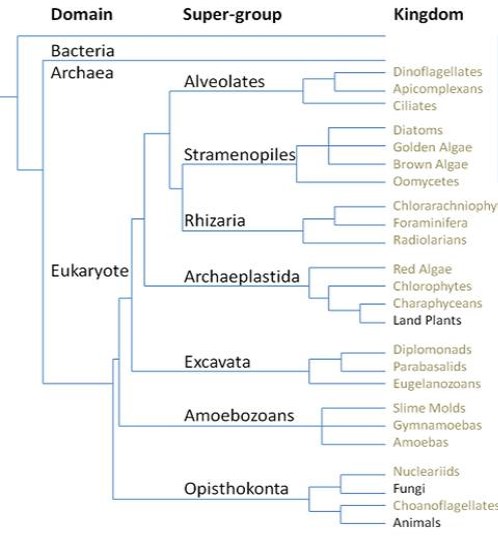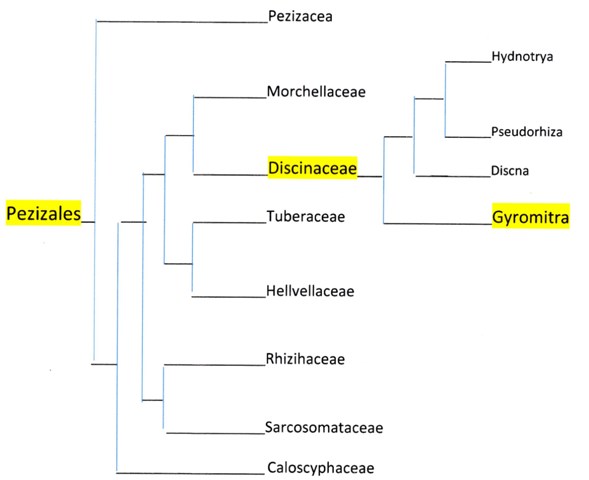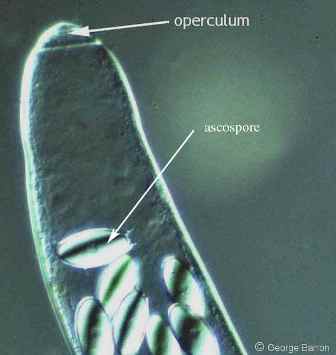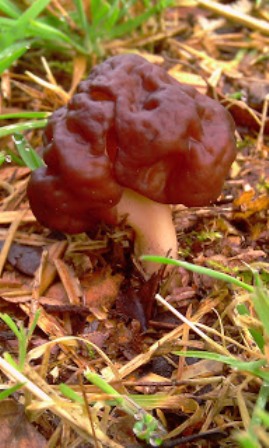Classification

tree created by Dr. Gretchen Gerrish, based on molecular data
Domain: Eukarya
A domain is the highest classification of living
organisms. There are only three: Bacteria,
Archea, and Eukarya. All eukaryotes have
membrane-bound organelles and a true nucleus.
Other than that, the group is extremely diverse.
It contains everything from an
Asian elephant to a
cottonwood tree to a
diatom.
Supergroup: Opisthokonta
Supergroups are
relatively new classifications. It was
previously believed that there were only four kingdoms of
eukaryotes: animals, plants, fungi, and protists.
Bacteria were even considered a kingdom before domains
were used. Now, however, we know there are
22-24 kingdoms of eukaryotes contained within seven supergroups.
Organisms in the opisthokonta are characterized by
having posterior flagella at some point in the life cycle.
Fungi are classified under this group because they had
motile spores at some point in their evolutionary history.
However, the only group of fungi whose spores still move are the chitridiomycota. Humans are opisthokonts
too because sperm is flagellated.
Kingdom: Fungi
Despite the rearranging of
the upper levels of classification, the kingdom fungi has
endured. Organisms in this kingdom are
classified as being heterotrophic,
non-vascular, reproducing via spores, and having an alteration of generations.
An example of a fungus is the jelly ear mushroom. (Auricularia
auricula-judae)
Phylum: Ascomycota
The five phyla of fungi (above)
are based on their method of producing sexual spores.
There is also a group called the deuteromycetes, or imperfect fungi,
and they have
no known sexual stage. An example of this is the
fungus responsible for making
penicillin. If a sexual stage is discovered in
one of these fungi, they are moved to one of the five other phyla.
The ascomycota have sexual spores (ascospores) borne
internally in a sac-like structure called an ascus.
Their asexual spores (conidia) are borne externally on a
conidophore. The fungus
Cordyceps subsessilis is also in the phylum
ascomycota.

tree
based on SSU and LSU rDNA genes, redrawn from the journal
Mycologia
Class: Pezizomycetes
These fungi have asci that rip open to form a lid-like
structure called an operculum (below).

photo courtesy of George Barron
Order: Pezizales
The pezizales are the only
order of the pezizomycetes.
Family: Discinaceae
The fungi in this family are variable; they can grow above or
below ground. The surface of the fruiting bodies is brown
and sometimes contorted. The stalk of the mushroom can
also be contorted. The asci can be cylindrical or
sac-like, with a rounded tip. Spores can be anywhere from
brown to transparent.
Genus: Gyromitra
The name Gyromitra comes
from the greek word guros, meaning a turn, and mitra meaning head.
Fungi in this genus have convoluted caps.
 Species: Gyromitra esculenta
Species: Gyromitra esculenta
As mentioned earlier, the name esculenta means edible,
somewhat paradoxically in this situation. The genus Gyromitra has not been
extensively tested for DNA similarities.
Therefore, the classification of species is more based on what
they look like, not molecular data. Gyromitra
esculenta is classified by the fact that it fruits in spring,
has a skinny stem with no bumps, and the cap is wrinkled and more reddish than brown.
Now that you know how this fungus fits into the tree of life,
learn about how it survives on the
nutrition page.
HOME
